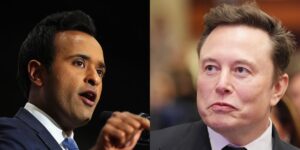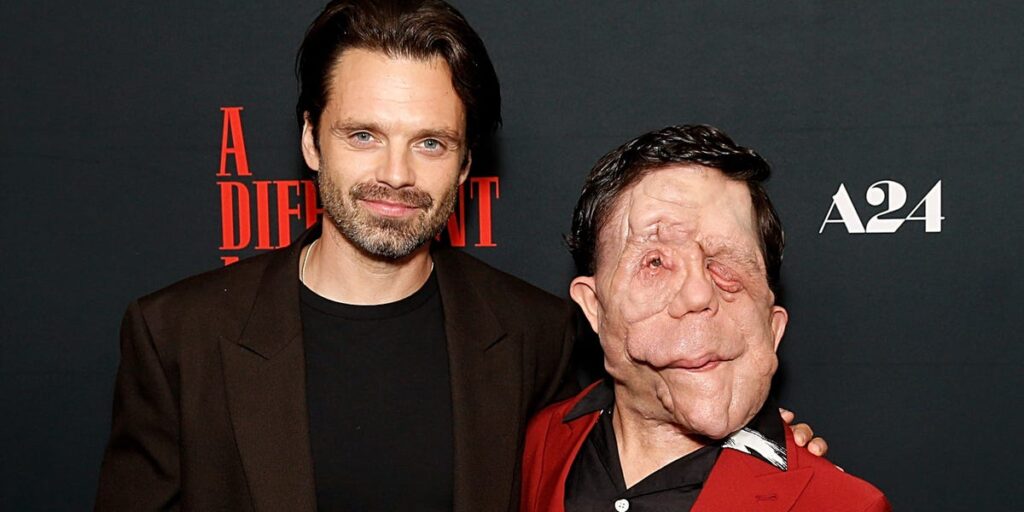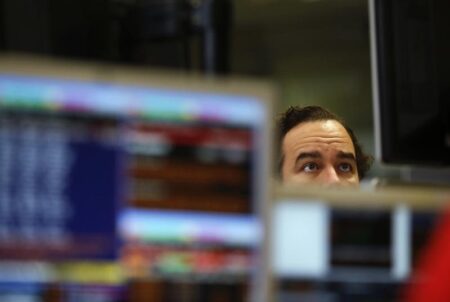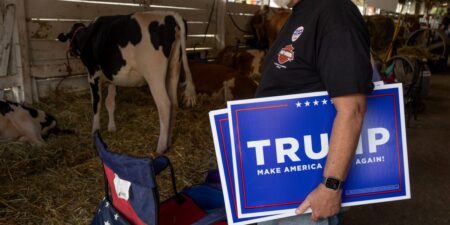A24’s latest dark thriller “A Different Man” is a twisted exploration of the inner and outer self, featuring a standout performance from British actor Adam Pearson.
The movie stars Sebastian Stan as Edward, an aspiring actor living with neurofibromatosis (NF), a rare genetic condition that causes typically benign tumors to grow on nerve cells throughout the body and on the skin.
Frustrated by the way he’s judged and mocked for his appearance in his daily life, Edward agrees to participate in an experimental drug trial that can heal him. The procedure is a success and layers of his skin come off over time, revealing a new face and new alter-ego that he names Guy.
But the novelty wears off after Edward meets the charismatic Oswald (Pearson), who was also born with neurofibromatosis but navigates the world with confidence. As the pair get to know each other better, Edward finds himself envious and longing for the identity he gave up.
Although Pearson, 39, is primarily known for his work as a presenter and award-winning disability rights campaigner, “A Different Man” marks his latest acting credit. Here’s everything to know about him.
Pearson was diagnosed with neurofibromatosis type 1 at 5 years old
Pearson has an identical twin brother named Neil Pearson, who also has neurofibromatosis. NF manifests in different ways for the siblings; Adam has facial differences and Neil experiences poor short-term memory and epilepsy. As of 2024, Adam told People magazine that he’s undergone 39 procedures to remove his excess tumors that continuously grow back.
In a 2014 interview with The Observer, Adam said that he was bullied in school growing up because of his appearance.
He told Longevity that “TV was always plan A for me,” but he studied business management at the University of Brighton as a backup plan.
Adam went on to make a name for himself as a presenter on the documentaries “Horizon: My Amazing Twin,” “Adam Pearson: Freak Show,” “The Ugly Face of Disability Hate Crime,” and “Eugenics: Science’s Greatest Scandal.” He and Neil were also the subjects of the 2019 short documentary “The Pearson Twins.”
While working in TV production, an opportunity arose for Adam to have a role in Jonathan Glazer’s 2014 sci-fi film “Under the Skin” starring Scarlett Johansson. He went on to appear in a few more shorts and movies, including writer and director Aaron Schimberg’s “Chained for Life.”
Throughout his burgeoning career in entertainment, Adam has also used his platform to advocate for disability rights and destigmatize NF.
“I go into everything with a clear head and a full heart,” Pearson told People in a recent interview. “If people want to talk, let’s talk. I know some in the disabled community say, ‘It’s not my job to educate you about disability.’ But we’re the experts. I think if I’m not educating, I’m being reckless and irresponsible.”
Pearson’s role in ‘A Different Man’ was written for him
After meeting Pearson through “Chained for Life,” Schimberg ended up penning the script for “A Different Man” specifically with him in mind for the character Oswald.
“I was inspired to write a role to show off his range, also as a sort of homage to him,” the “Different Man” writer and director said in the film’s press notes.
Schimberg, who has a corrected bilateral cleft lip and palate, credited Pearson with changing “my view about my own disfigurement because I’ve always lived in fear of the judgment of others.”
Schimberg also said that he wouldn’t have considered making “A Different Man” if Pearson passed on the role.
Pearson, for his part, praised the writer-director for writing a role for him that doesn’t typecast actors with disabilities, which is something he’s previously called out in Hollywood.
“Aaron knows how to write for me, and he knows what I’m like in real life,” Pearson said in the press notes. “It’s always good to broaden one’s portfolio of characters — as a disabled actor, you run the risk of getting typecast anyway. It was a real joy to be involved in this, and to get the band back together.”
“A Different Man” is now in theaters.
Read the full article here















